Mirrorless vs DSLR cameras: the 10 key differences you need to know
We settle the great mirrorless vs DSLR camera debate

The great mirrorless vs DSLR camera debate has been rumbling for a few years now. While the decision will always be a personal choice, the major camera manufacturers have chosen their side: almost all are now entirely focused on developing the best mirrorless cameras.
Both Canon and Nikon have been discontinuing, or simply not updating, their DSLR models over the last few years. As a result, mirrorless is very much the default format for new cameras and is our recommendation for most people. But it isn't quite that simple: the best DSLR cameras continue to offer excellent value and have large, established ranges of lenses. There's also a healthy second-hand market, which counts for a lot during these financially-challenging times.
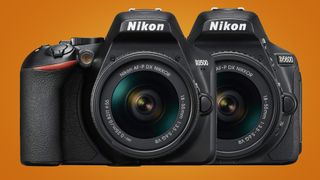
Nikon has officially confirmed that it's ceased production on two of its most popular entry-level DSLRs, the Nikon D3500 and D5600. And while Canon has been quieter about the future of its DSLR line-up, it has confirmed that the 1D X Mark III will be its final flagship DSLR. The only company that appears to be carrying the torch for new DSLRs is Pentax, which launched the K-3 III in 2021, followed – surprisingly –by a Monochrome version in 2023. In reality, we don't expect to see any new DSLRs launched from this point on. Mirrorless is the future, but second-hand DSLRs continue to offer great value.
In the early days of mirrorless cameras, the situation was very different. If you were a pro, you tended to pick up a DSLR. Hobbyists and amateurs, who were more concerned with weight and portability, would instead lean towards their mirrorless counterparts.
This has now changed completely. With cameras like the Sony A7R V, Fujifilm X-H2S and Canon EOS R3, the big manufacturers have confirmed that mirrorless is the future for their flagship technology. A new breed of cameras like the Nikon Z9 and Sony A9 III don't have mechanical shutters at all, making them flag-bearers for the next, all-electronic generation.
But what exactly are the differences between a mirrorless cameras and a DSLR? And are there any situations where you should still consider the latter? Our in-depth guide is here to give you all the answers – including a simple explanation to that first question.
Mirrorless vs DSLR: what's the main difference?
Mirrorless vs DSLR: the basics
Let’s start with the basics and look at the key differences between these two types of cameras. The key is in the names. DSLR stands for Digital Single Lens Reflex, which works by the light hitting a mirror angled at 45 degrees. That light goes straight up into an optical viewfinder which allows you to see precisely what the lens is looking at. This is a true optical path, with no digital processing in the middle.
When you’re ready to take a photograph, that mirror moves out of the way – to reveal the image sensor – and if you’ve used one in the past, you’ll be familiar with the satisfying (but fairly loud) noise it makes as it does so.
Get daily insight, inspiration and deals in your inbox
Get the hottest deals available in your inbox plus news, reviews, opinion, analysis and more from the TechRadar team.

By contrast, mirrorless cameras – you’ve guessed it – don’t have a mirror. With these cameras, the light passes through the lens and straight onto the sensor to be processed. It’s then displayed either on the monitor on the back of the camera, or in the electronic viewfinder (EVF), which is in essence a very small monitor. This time, when you take a picture, the camera is simply recording what is on the sensor at that moment in time.
DSLRs use the same technology as their film counterparts, which have been around for decades. They’re very familiar for anybody who has been serious about photography in recent years. Legacy companies such as Canon, Nikon and Pentax have been making them for all those years and so have a lot of experience to draw from.
These days, almost no new DSLRs are coming to the market. Finding stock of certain models is becoming harder, but there are still a lot you can buy, including many that are available second-hand. They tend to have great handling, offer fantastic image quality and one advantage that doesn’t look set to go away for a while yet: very impressive battery life.
By taking away the mirror, mirrorless cameras give you several advantages (and very few disadvantages). The key one is that, since they don’t need that big clunky mirror setup, they can be smaller and lighter than their equivalent DSLR counterparts.
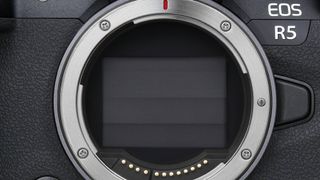
Some of the tasks of the camera, like autofocusing, can take place on the sensor itself, leading to super-quick focusing speeds. Speaking of speed, with no mirror to move out of the way, frame rates aren’t limited so much by physicality. Mirrorless cameras routinely offer at least 10fps, with some high-end models delivering 20fps or 30fps at full resolution, with continuous autofocus between each shot.
In the beginning, mirrorless cameras tended to use smaller sensors than DSLRs. But now, the most popular sensor size in these models is full-frame, with Sony, Nikon, Canon and Panasonic all producing this type of camera. APS-C is also a common sensor size, for both mirrorless and DSLR. All of this means that there’s no generally discernible difference between outright image quality in DSLRs and mirrorless cameras, no matter which you choose to go with.
The electronic viewfinders found on early mirrorless cameras weren’t particularly great, being low in resolution and slow. But over the years the technology has advanced so much that many photographers now prefer the super high-resolution viewfinders on the current crop of high-end mirrorless cameras. They show a truer reflection of what your final image will look like, as well as allowing you to see a preview of your image after you’ve shot it.
All of this makes it sound like mirrorless is the obvious winner. While the fact that only one DSLR has been announced in the past 12 months – and that was a monochrome version of a camera from 2021 – might seem to back that up, there are still some advantages of the older technology.
We’ll discuss the main differences in the coming pages to help you come to a firm conclusion, so use the arrows at the top of this page navigate your way through them.
1. Mirrorless vs DSLR: Size and weight
- DSLR cameras are traditionally larger, with ergonomic handling
- Mirrorless cameras are generally smaller and lighter
When mirrorless cameras first entered the market, one of their big selling points was their small size. The first cameras of this kind to get really popular were Micro Four Thirds models, which traded on the idea that the overall system was much smaller and lighter than their DSLR equivalents.
As larger sensor sizes started to become popular, it no longer became a simple statement of fact that mirrorless meant 'smaller'. When you use an APS-C or a full-frame sensor, you might be able to get a small(ish) body, but the compatible lenses will likely be big and heavy.
Some manufacturers have attempted to answer the problem with retractable or 'power-zoom' kit lenses, but as soon as you need to swap to a different type of lens, the problem appears again.
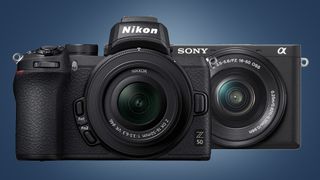
If size and weight is your main concern, the Panasonic G series and Olympus (now OM System) cameras have the advantage. They use the Four Thirds sensor format inside their Micro Four Thirds models, which are smaller than APS-C and full-frame sensors.
There's an argument that their outright image quality can't match larger sensors – especially in some shooting scenarios such as low light – but the smaller sensor helps to deliver a much more compact system all round. And it's great for those who need high levels of zoom in a small package.
Alternatively, clever mirrorless packaging means APS-C cameras like the Fujifilm X100VI and even full-frame models like the Sony A7C R number among some of the best travel cameras you can buy.
At the other end of the spectrum, some higher-end mirrorless cameras are actually very large, with some manufacturers responding to feedback from pros who say they'd prefer larger grips for better ergonomics. The flagship Nikon Z9, for example, has a bulky body that adopts the classic styling of a DSLR, complete with two grips.
Conversely, the final entry-level DSLRs shrank to compete with the smaller footprint of similarly priced mirrorless cameras. Nikon's D3500 and Canon's EOS Rebel T7 / 2000D are usefully small and light, making them less of a burden to carry around.
2. Mirrorless vs DSLR: Lenses
- Large lens ranges available for established DSLR mounts
- Newer mirrorless systems are expanding all the time
Technically speaking, if you want the widest possible choice of lenses, a Canon or Nikon DSLR will be your best bet. Each of these options has a huge range of lenses at a variety of price points, with third-party manufacturers such as Sigma and Tamron also providing options.
DSLRs have the age advantage, with the lens format having been around for decades. But the options available for mirrorless cameras have caught up rapidly, and now there’s a diverse range of lenses to suit almost every need, with more new lenses being added as time goes on. It's really only those with very niche needs who are missing out by choosing mirrorless.

The longest established mirrorless system – although now falling in popularity – is Micro Four Thirds, used by Olympus and (some) Panasonic cameras. As such, this system offers the most all-encompassing range at the moment.
Fujifilm’s X-series is also pretty comprehensive, having been around for a similar length of time. Its medium-format GFX series has fewer options, but is gaining ground as the years go by. Both offer a good set of zoom and prime lenses, and while there are still a few gaps here and there, they tend to be niche optics that the average consumer won’t be too bothered about being without.
Sony’s APS-C and full-frame mirrorless cameras have been around for quite some time now. They share the same mount, so while there are lenses that are specifically designed for either APS-C or Full-Frame, being able to swap between the two is beneficial for those upgrading. There are some high-end optics among the best Sony lenses, which match perfectly with models such as the Sony A7 V, including premium optics like the Sony FE 24mm f/1.4 GM wide-angle prime.
Canon officially has two lines of mirrorless cameras – APS-C and full-frame – but it's increasingly clear that Canon is moving towards a singular RF-mount. If you are an existing Canon DSLR owner, you can also use mount adapters on its mirrorless systems, giving you the option to only replace lenses as and when its necessary, rather than all in one go.
Right now, there’s a healthy range of lenses for EF-M and RF mounts, but there are still some significant gaps to be filled, even among the best Canon RF lenses. The arrival of new RF-S lenses (for APS-C cameras) almost certainly puts an end to Canon's EF-M range, although it remains a good-value option. We're hoping to see a lot more RF-S lenses arrive to make cameras like the EOS R7 and EOS R10 more attractive.

Nikon also uses the same mount across both its APS-C and full-frame mirrorless systems. The Z-mount is different from the F-mount used by Nikon DSLRs, but if you already have some lenses, you can use an adapter to bring those across. It’s a pretty seamless transition and helps to fill in any gaps in the line-up while we’re waiting for Nikon to expand its mirrorless lens range. At the time of the system's launch, there were only a handful of Z-mount lenses, but there’s a good degree of choice among the best Nikon Z lenses now.
Another fairly recent introduction is the L-mount alliance, which is a joint venture between Panasonic, Sigma and Leica. These three companies are developing products that can be used in conjunction with each other, giving buyers the advantage of triple the range and triple the development power. There’s already a good range of lenses available for L Mount, with more appearing regularly – including the Lumix S 100mm F2.8 Macro, which arrived in January 2024 as the world's smallest and lightest 100mm macro lens.
3. Mirrorless vs DSLR: Viewfinders
- Some prefer the clarity of a DSLR's optical viewfinder
- Modern mirrorless EVFs are sharp and display useful info
All DSLRs, even the cheapest, come with an optical viewfinder, because it's an integral part of the DSLR design. Although it's relatively rare in current line-ups, some entry-level mirrorless cameras, on the other hand, don't have viewfinders at all. This means your only option is to compose photos via the rear LCD, which is a boon for portability, but doesn't always work so well in bright sunlight.
Mirrorless cameras use electronic rather than optical viewfinders. That means they display the image directly from the sensor readout and not via an optical mirror/pentaprism system.
Electronic viewfinders are advancing at a fast pace, and the latest rarely show any graininess that was an issue in earlier generations, while the visible lag that was once common has all but been eradicated.
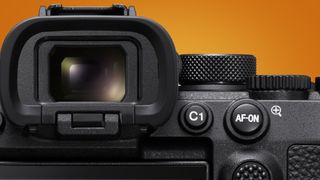
The advantage of electronic viewfinders is that they can display a lot more information than an optical viewfinder, including live image histograms, for example. They can also simulate the digital image the camera will capture, so you don't get any horrible surprises when you review your image, as it's exactly what you're seeing.
This simulation is not always perfect, however, and many photographers prefer to see the world with their own eyes as they compose the image, then check the digital version on the LCD once it's been captured. Optical viewfinders are also easier to use in low light.
This will come down to personal preference. Get one of the latest high-end mirrorless cameras with a large magnification, large resolution electronic viewfinder, and you'll be hard pressed to find fault with it. The Sony A7S III is an example of a simply stunning electronic viewfinder, offering superb clarity with a 9.44m-dot resolution. And this is increasingly becoming standard on the latest mirrorless cameras.
4. Mirrorless vs DSLR: Autofocus
- Most DSLR cameras have older, slower autofocus systems
- Hybrid AF systems with AI subject-tracking are the future
Professionals who wanted the very fastest autofocusing used to head straight for DSLRs. But these days, with fantastic advances made in mirrorless technology, it’s very often the newer type of camera that has the advantage – especially if you go for premium mirrorless options.
High-end DSLRs haven’t been updated in some time, but models such as the Nikon D850 and Canon EOS-1D X Mark III still offer sophisticated systems. They use fast and efficient ‘phase-detection’ autofocus modules which are mounted below the mirror in the camera’s bodies.
However, DSLR systems are limited by the fact that their autofocus only works while the mirror is down. This means that fast frame rates are difficult to achieve, since this needs to be moved out of the way each time. You could switch to using Live View, but that means the regular AF module is no longer in the light path and a slower contrast-detect AF system is used.
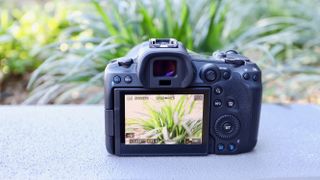
Some slightly newer DSLR models, such as the Canon EOS Rebel SL3 / EOS 250D and Canon EOS 6D Mark II have included Dual Pixel CMOS A, which uses phase-detection pixels built into the sensor. This gives faster autofocus in Live View, and while it helps to close the gap on mirrorless cameras, we’re now seeing such incredible systems from several manufacturers that mirrorless definitely now has the edge.
Since there’s no mirror, these types of cameras use sensor-based autofocus all the time. Many are contrast-based AF, but they tend to be faster than the equivalent AF modes on DSLRs. More mirrorless models are now using advanced hybrid AF systems, which combine contrast-detect with phase-detect AF from the sensor to deliver exceptional performance.
They impress not only with their speed, but also accuracy when it comes to tracking a moving subject. Both the Canon EOS R5 and the Canon EOS R6 are two recent introductions that offer almost unerring accuracy when tracking a subject. Similarly, super high-end models such as the Sony A9 II and Sony A1 are fantastic options for sports and action photographers who simply can’t afford to miss a shot.

Another advantage that many mirrorless cameras offer is eye- and face- detection which makes photographing people (and animals) even more accurate. All of the major mirrorless brands offer Face/Eye detection, helping you to get sharp shots almost without fail. The latest models are also leveraging the power of AI to offer enhanced subject recognition and tracking. One example is the Sony A7R V, which features a dedicated AI chip for this purpose.
5. Mirrorless vs DSLR: Continuous shooting
- The best DSLRs can no longer match mirrorless burst speeds
- Electronic-only continuous shooting can hit up to 120fps
You need a fast continuous shooting mode to capture action shots, and mirrorless cameras are streaking ahead here. This is partly because the mirrorless system has fewer moving parts, but also because many models are now pushing ahead into 4K or even 8K video – this demands serious processing power, which helps with continuous shooting too.
To put this in perspective, Canon's top professional DSLR, the Canon EOS-1D X Mark III, can shoot at 16 frames per second when using the viewfinder. Compared this to the Canon EOS R3, which can shoot full-resolution RAW stills at 30fps. The Sony A1 can do the same at a resolution of 50MP with autofocus.

You have to be a little careful, though, when looking at the specs. Some mirrorless cameras will boast even higher frame rates than this, but will have to use an electronic shutter to achieve this and focus will be fixed from the first shot. This isn't great if you're planning to track a moving subject, or shoot under some types of artificial light, where banding can occur without the use of a mechanical shutter.
You've also got to be realistic about what kind of burst shooting speeds you are going to need. Shooting at 60fps means you'll fill up a memory card pretty quickly, and you'll have to spend a lot of time trudging through a multitude of images to find that 'one' shot. That said, with even entry-level mirrorless cameras offering faster burst shooting speeds than most DSLRs, mirrorless cameras certainly have the edge if this is your priority.
What's more, the latest all-electronic flagships are pushing the boundaries of burst shooting speeds. The Nikon Z9 can capture 11MP JPEGs at 120fps, with full autofocus and auto exposure. Upping the stakes even further, the Sony A9 III uses a new type of sensor to shoot at 120fps with no risk of rolling shutter distortion.
6. Mirrorless vs DSLR: Video
- Mirrorless is the clear choice for videographers
- 4K is now the standard, with the best shooting 6K or 8K
DSLRs were well ahead of mirrorless cameras when it came to offering professional HD and Full HD video capture. Their vast range of lenses and other accessories made them a hit with pro video makers – the Canon EOS 5D Mk II, in particular, changed the game by shooting video from a full-sized sensor, for far less money than many pro cameras.
But the shift has certainly been towards mirrorless cameras favor in recent years, offering a wealth of video features that most DSLRs can't match.
4K capture is a more common feature for starters on mirrorless cameras, while DSLRs have been slow to offer this functionality. With relatively few new DSLRs appearing in recent months, there's not too many to choose from if you need this kind of video. For entry-level models that do offer it – such as the Canon EOS Rebel T8i / EOS 850D – a heavy crop is applied, which is pretty limiting in many situations.

There's also the efficient live view autofocus and processing power offered by mirrorless cameras, while the growing range of adapters and accessories out there offer video shooters a more complete system.
The Panasonic Lumix GH6 is currently our pick for the title of best 4K camera. It offers fantastic video quality and value in tidy packaging. But one look at our round-up of the best video cameras reveals that things have moved on since it launched in 2022. Uncropped 6K is now almost the norm, in a list topped by its cousin, the Lumix S5 II, which benefits from phase detection autofocus.
We're also starting to see even higher resolution options come to the market. The Nikon Z9 is one of a few cameras that can shoot 8K video, and its our top choice. The Canon EOS R5 is another, although its subject to some recording limitations. We expect 8K to become the norm over the coming years as the technology develops and becomes more commonplace.
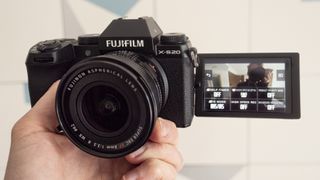
Hybrids make up an increasingly large segment of the mirrorless market, offering a blend of stills and video performance for enthusiasts. The niche was previously occupied primarily by Panasonic cameras such as the Lumix GH6 and GH5 Mark II, but models such as the Nikon Z8, Fujifilm X-S20 and Sony A7 IV show that hybrids are high on everyone's agenda.
7. Mirrorless vs DSLR: Features
- Event entry-level DSLRs offer full manual controls
- Mirrorless cameras benefit from the latest features
In the past, it was hard to split DSLRs and mirrorless cameras on their feature sets. But these days, with more money and time being thrown at the development at mirrorless cameras, the latter are now the clear winners.
Both DSLRs and mirrorless cameras offer full manual control over exposure and give you the opportunity to shoot both raw files and JPEGs. Image quality between the two is pretty much identical, aside from the newer sensors found in mirrorless bodies. In any one sector, such as entry-level cameras, enthusiast or pro models, the control layouts and capabilities are pretty similar, too. Entry-level DSLRs tend to hide away the manual controls under a layer of automation, but it's the same for mirrorless cameras.
While the feature set of high-end DSLR cameras is generally pretty impressive, it's fair to say that the average mirrorless camera now beats the average DSLR on specs. Most mirrorless cameras offer advanced IBIS (in-body image stabilization systems), advanced autofocus technologies such as tracking and eye-detection, 4K video as standard and more besides.
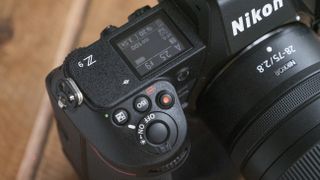
Processing power is at its height in mirrorless cameras – again, by virtue of them being newer. These high-end processors facilitate some of the more impressive features, including high ISOs, fast shooting speeds and 4K video at faster frame rates.
The fastest autofocusing, as well as the most comprehensive spread of points across the sensor, is now with mirrorless cameras, while super-fast frame rates of up to 30fps are only really possible thanks to the lack of a mirror.
Most mirrorless cameras offer articulating or tilting touch-sensitive screens, and although there are several DSLRs which offer the same, you'll now see the best screen technology (and menu systems) on mirrorless cameras. Optical viewfinders were often the preference, but with dramatic advances in EVF technology over the past few years, many people have now switched to electronic 'finders.
8. Mirrorless vs DSLR: Image quality
- Both formats use APS-C and full-frame sensors
- Smaller Micro Four Thirds sensors are mirrorless only
There's nothing to choose here, either. Currently, the highest resolution can be found in a mirrorless camera, the medium format Fujifilm GFX100S, which has a 102MP sensor, closely followed by the Hasselblad X2D 100C at 100MP. Admittedly, those are not cameras many people can afford, although the cheaper Sony A7R V mirrorless camera manages 61MP – still a good 11MP more than the closest DSLR, the Canon EOS 5DS and 5DS R.
It's not just about megapixels, though, because the main factor in image quality is sensor size. With the exception of medium format sensors, full-frame sensors are the biggest and offer the best quality in low light, while cameras with APS-C sensors are competitive on image quality and much cheaper – you can get either of these sensor sizes in both DSLRs and mirrorless cameras.
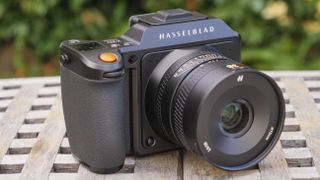
But the compact system camera market offers smaller formats too. The Micro Four Thirds format used by Panasonic G series and OM System is smaller than APS-C, but so are the cameras and lenses, so you need to weigh up what's most important to you – size or ultimate image quality.
Overall, then, there's no intrinsic image quality advantage in a DSLR, given that the same sensor sizes are available in mirrorless cameras, too.
9. Mirrorless vs DSLR: Battery life
- DSLRs have superior battery life, averaging 800+ shots
- Mirrorless battery life is usually weaker at around 400 shots
Battery life comparisons might not be exciting, but they are important when the differences are as great as this.
The very affordable Canon EOS Rebel SL3 / EOS 250D DSLR, for example, can take 1,070 shots on a single charge, while the Fujifilm X-T4 mirrorless camera, a much more advanced model, can only shoot 500 photos before the battery expires. This pattern is repeated across the range of DSLRs and mirrorless cameras.
Why's this? DSLR batteries are sometimes larger, though not always, and you might have thought that driving the mirror up and down for each shot would consume more power, and that that LCD display would be used just as much. However, mirrorless cameras also have to power an EVF in most cases as well, and this is why they still have much shorter battery lives.
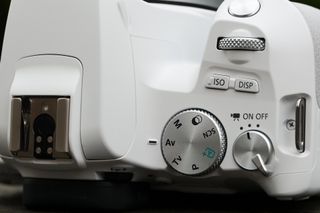
So, this is one area where DSLRs do often have a substantial practical advantage. If you're somebody that likes to shoot a lot in any given day, then you'll almost certainly need to invest in a second battery, or look for a mirrorless model that offers USB charging, so you can use a power bank while on the go. That isn't too difficult these days, though – most recent mirrorless cameras offer in-camera USB charging.
10. Mirrorless vs DSLR: Price
- Cheaper DSLRs tend to miss out on the latest features
- Entry-level mirrorless cameras are more expensive
You might hope that the simpler design of a compact system camera would make them cheaper to buy, but that's not necessarily the case. If you want a fully-featured, 'proper' camera with a viewfinder for the least money, then a DSLR is still the cheapest option – but it's getting a lot closer between the two.
For example, the 24MP Nikon D3500 DSLR has a great APS-C sensor, an optical viewfinder (of course), decent manual controls and a staggering 1,550-shot battery life.
Its nearest rivals on price include models such as the Sony Alpha A6000, which packs in an almost identical 24MP APS-C sensor and features a built-in electronic viewfinder. That said, it's only that cheap because it's been superseded. You'll find a comprehensive overview of the best budget cameras in our dedicated round-up.
Once you get into enthusiast and pro market, however, the differences largely disappear – for any given amount of money you get broadly the same features, performance and power. This is borne out by many of the premium entries in our list of the best cameras overall.
Mirrorless vs DSLR verdict
- DSLR cameras offer impressive handling, long battery life and top image quality
- Mirrorless are technically more advanced, and often smaller and lighter
In times gone by it was harder to give a definitive answer in the mirrorless vs DSLR debate. But these days it's becoming increasingly difficult to argue the case for the DSLR. With more and more mirrorless models coming onto the market – and fewer and fewer DSLRs – it's clear which way the future lies.
Mirrorless cameras give you the advantage in many different scenarios. They are generally lighter and smaller their DSLR equivalents – often with smaller and lighter lenses to match, too. They bring a comprehensive, modern feature set, such as superlative AF tracking performance, 4K video recording and IBIS, where DSLRs are now starting to fall behind.
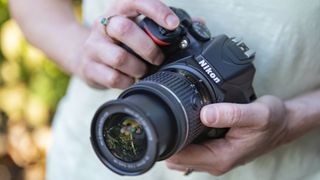
That said, there's still something to be said for DSLRs – and there's still some life in the old dog yet. On the whole, because they're older and lack EVFs, they tend to be a cheaper proposition than mirrorless cameras, and you can pick up some great bargains.
The trade-off is that you might not get the latest tech, but not every photographer needs it. DSLRs also give you a more comprehensive lens range, at least for the time being. Battery life for mirrorless cameras remains some way behind DSLRs and, while it is improving, nothing yet quite matches what a DSLR is capable of in that respect.
The ergonomics of both high-end DSLRs and high-end mirrorless cameras are fantastic, but it's arguable that cheaper mirrorless cameras aren't quite as pleasurable to use as cheaper DSLRs. This is, though, often down to personal choice and shooting preferences. There's now less to choose between optical and electronic viewfinders, with the latest iterations now being so good that many often prefer them.
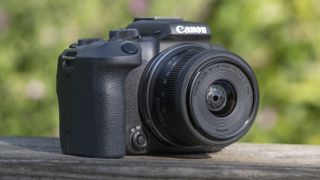
If you're already invested in the DSLR system – or perhaps you really do have a strong craving for their shooting style – there's still a little bit of life left in them. We won't write them off completely just yet, but it seems relatively unlikely we'll be seeing many new releases from here. Nikon has already said as much, and other manufacturers like Canon are likely to follow suit.
All in all, it's safe to say that if you're coming to a 'real' camera for the first time, it makes more sense to choose mirrorless now. It's clear that every manufacturer will be pursuing advances in this area much harder than DSLRs, which will be consigned to the history books over the next decade.
Right now, there's never been more choice – but for most photographers, mirrorless makes the most sense.
Formerly News Editor at Stuff, Chris has rarely been able to resist the bite of the travel bug – so he now writes about tech from the road, in whichever Wi-Fi-equipped café he can find. Fond of coffee kit, classic cars and sustainable gear, if there’s one thing Chris loves more than scribbling, shooting and sharing his way around the world, it’s alliterative triplets.
- Timothy ColemanCameras editor
- Mark WilsonSenior news editor

